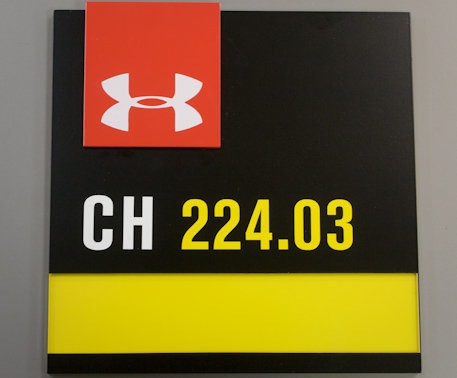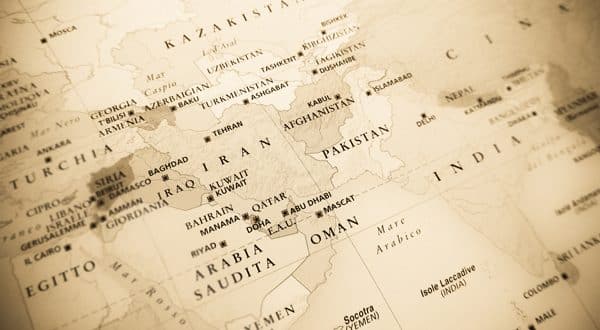Accessibility in the Middle East
Doha, Qatar
In the United States, Western Europe and Australia, accessible sign design is taken for granted. 25 years of accessibility codes and the all encompassing guidelines of the International Standards Organization have made egress and identification signs common in nearly every public building in the Western World. While some variations do exist, a blind or visually challenged person could navigate a building using identification signs from Sidney to San Diego.
The rest of the world, and in particular the Middle East, represents a bigger puzzle. The fast growing cities in Dubai, Abu Dhabi and Qatar bring in millions of people from around the world with dozens of dialects. At the same time, there are no state-mandated codes and developers have no culture of standardization. In fact, Graham Tuck, a director at The Look Company, a global event and location company working in Doha, believes that bringing accessible signs to the middle east requires a fresh new marketing and sales job. “Developers sort of see it. They want their signs to be like in New York and London, but they also do not understand why an entirely new system needs to be developed to reach 2% of the population.” Tuck thinks that education will do the trick. “Designers and developers need to see how accessible design better for their projects without bringing draconian codes into the discussion. Certainly never bring up the dreaded terms ADA and DDA, which has a certain American imperialism about it.”
Developers can be sold on a few key ideas though. Tuck believes that safety is an important factor. “These buildings are usually enormous. The ability to find the exit points effectively is a big motivator for high quality accessible signs.” Other educational approaches can include improved branding, consistency, and an improved building experience.
Another strong approach is to focus on the most straightforward accessible improvements. “Simplicity is a good policy,” advises Tuck. “Keep things to a few simple recommendations that will be the most effective.”

This sign developed by Acorn Signs for Under Armour show the power of utilizing a brand identity for accessible signs including consistency iconography, colors, and typography.
How would an educational program for Accessible Signs in the Middle East look? To be effective and create a system that would improve the experience of the widest range of users, these five tips should be central to promoting effective accessible sign systems.
Five Tips for Developing Accessible Signs in the Middle East
- Focus on the Visually Impaired
- Tactile Room Numbers and Grade 1 Braille
- Consistency of Shape, Size, Height and Brand
- Temporary Information for Multiple Languages
The blind are a small minority but the visually impaired make up a large percentage of the population. Accessible design codes are both effective and easy to understand in this area and include high contrast typography and legible letter sizes.
Numbers are nearly universal in every modern culture and are the most obvious addressing system for the blind. Focusing on tactile room numbering makes it easier to develop consistent signs. In addition Grade 1 Braille is universal for numbering as well, and is the simplest to implement with few chances for error.
Contractors developing large scale projects will both save money and create more accessible signs by focusing on consistency, maintaining a standard shape, color, size, and location for signs. In addition, adding a consistent brand identity icon will support familiarity for each sign, and tie to the overall brand for the building.
Most signs in modern developments in Dubai or Qatar have a minimum of two languages on each identification sign. Since it is very difficult to get correct translations and changes are common, it is important to keep information as temporary as possible through paper and modular inserts. These destination names should be separated from identification information.
To learn more, download our Middle East Accessibility White Paper.

